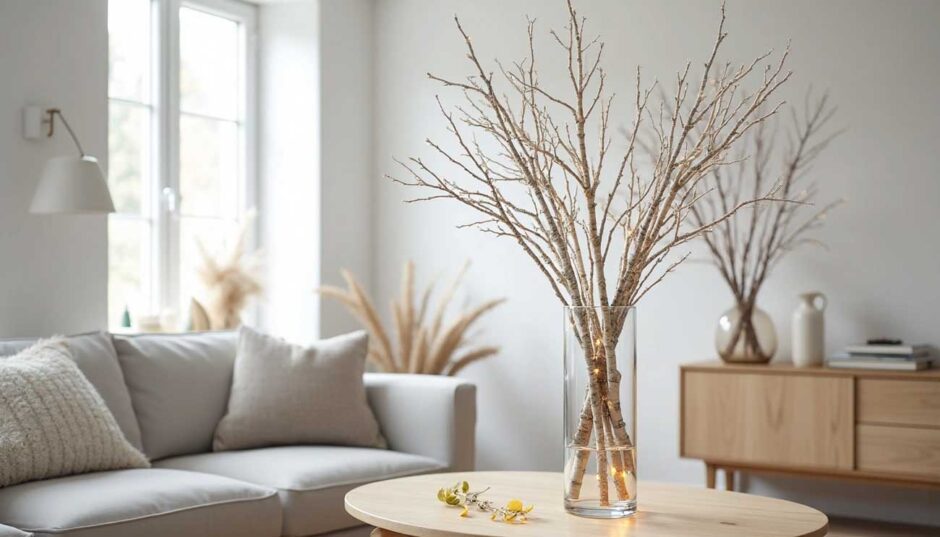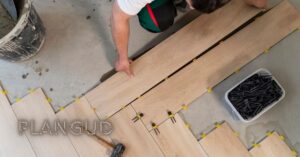Introduction
In a world of mass-produced furniture and cookie-cutter décor, people are increasingly looking for design elements that feel authentic, meaningful, and personal. One such trend that has captured the imagination of home decorators is pyntekvister—a Scandinavian-inspired approach to decoration that combines natural beauty, minimalism, and soulful design.
Literally translated from Norwegian/Danish, pyntekvister means “decorative branches.” These are not just ordinary twigs; they are carefully selected, often dried, natural branches or crafted pieces that are used as accent décor in homes. Pyntekvister add a touch of nature indoors, infusing spaces with warmth, texture, and a sense of timeless style.
This article explores the meaning, history, and growing popularity of pyntekvister, along with creative ways to use them in your home, their cultural significance, and why they may be the perfect answer for anyone seeking unique décor with soul and style.
1. What Are Pyntekvister?
Pyntekvister are decorative branches or twigs used as ornamental pieces in home décor. They can be:
- Natural branches: Birch, willow, eucalyptus, cherry blossoms, or driftwood.
- Dried and preserved stems: Pampas grass, olive branches, or cotton stems.
- Artificial creations: Crafted from wood, metal, or recycled materials, designed to resemble natural twigs.
What makes them unique is their simplicity. Unlike heavily ornamented décor, pyntekvister thrive on minimalism, letting the natural shapes, textures, and silhouettes of branches become the focal point.
2. The Scandinavian Connection
Pyntekvister are deeply rooted in Scandinavian design philosophy, which emphasizes:
- Hygge: Creating coziness, warmth, and comfort at home.
- Lagom: The idea of balance—“not too much, not too little.”
- Biophilic design: Integrating nature into interior spaces for mental well-being.
In Nordic homes, it is common to see bare birch branches in a simple vase, adorned with seasonal ornaments, or left plain to showcase their raw beauty. This approach reflects both a respect for nature and a love of minimalist design.
3. Why Pyntekvister Appeal to Modern Homes
A. Connection to Nature
As people spend more time indoors, pyntekvister bring a natural element that reconnects us with the outdoors.
B. Versatility
They fit effortlessly into all décor styles—from rustic farmhouse to sleek modern apartments.
C. Sustainability
Using branches, whether foraged or repurposed, promotes eco-friendly living and reduces reliance on mass-produced décor.
D. Cost-Effective Beauty
Unlike expensive artwork or furniture, pyntekvister are affordable yet highly stylish.
E. Symbolism
Branches symbolize growth, renewal, and resilience, giving them a soulful presence beyond their visual appeal.
4. Creative Ways to Use Pyntekvister in Home Décor
1. Minimalist Vase Arrangements
Place tall branches in a ceramic or glass vase for a striking statement piece in your living room or hallway. Birch, pussy willow, and eucalyptus are particularly popular.
2. Seasonal Decorations
- Spring: Adorn branches with pastel ornaments, Easter eggs, or blossoms.
- Autumn: Add dried leaves, pumpkins, or acorns for a harvest vibe.
- Winter: Decorate with fairy lights, snowflake ornaments, or Christmas baubles.
3. Wall Art and Sculptures
Mount dried branches on walls as natural sculptures. Driftwood can be turned into unique art pieces or hung as a statement above beds and couches.
4. Table Centerpieces
Use pyntekvister as table décor by arranging them with candles, pebbles, or seasonal flowers.
5. Hanging Installations
Create a hanging branch mobile above dining tables or in children’s rooms. Add feathers, crystals, or photos for a personalized touch.
6. Outdoor-Indoor Transitions
Place pyntekvister near entryways or verandas to blur the line between outdoor and indoor spaces.
7. DIY Projects
- Wrap branches in fairy lights for a glowing evening feature.
- Paint twigs gold, silver, or black for a modern artistic look.
- Use them as jewelry hangers or photo displays.
5. Pyntekvister in Different Interior Styles
Scandinavian Minimalism
Raw, bare branches in neutral-toned vases that emphasize simplicity.
Bohemian Chic
Mix branches with macramé, hanging beads, and dried flowers.
Rustic Farmhouse
Pair wooden branches with burlap, lanterns, and earthy tones.
Industrial Urban
Combine metal-crafted pyntekvister with concrete walls and vintage bulbs.
Modern Luxury
Use painted or lacquered branches with glass, marble, or metallic accents for an upscale look.
6. Cultural and Symbolic Significance
Branches have long carried meaning in art, literature, and cultural traditions:
- In Christianity, branches symbolize peace and renewal (e.g., palm branches on Palm Sunday).
- In Asian cultures, cherry blossoms represent fleeting beauty and the cycle of life.
- In Norse mythology, the World Tree Yggdrasil connected the heavens, earth, and underworld through its branches.
- In modern décor, pyntekvister symbolize grounding—bringing nature into spaces where technology dominates.
Thus, pyntekvister are not just objects but symbols of life, harmony, and resilience.
7. Practical Tips for Decorating With Pyntekvister
- Height Matters: Choose branches proportional to your space. Tall ones suit high ceilings, while shorter twigs work for small apartments.
- Balance With Colors: Neutral branches pair well with both bold walls and minimalist palettes.
- Mix Textures: Combine smooth vases with rough branches for visual interest.
- Lighting: Highlight branches with spotlights or fairy lights to enhance shadows and textures.
- Seasonal Rotation: Refresh arrangements seasonally to keep décor dynamic and relevant.
8. Sustainability and DIY Foraging
One of the most appealing aspects of pyntekvister is sustainability:
- Foraging: Collect fallen branches during walks in nature.
- Upcycling: Use driftwood or old furniture parts repurposed as décor.
- Preservation: Drying eucalyptus or lavender branches ensures long-lasting arrangements.
- Eco-Friendly Alternatives: Artificial branches made from recycled materials are available for those who prefer zero-maintenance options.
This makes pyntekvister not only stylish but also a conscious design choice.
9. Real-World Examples of Pyntekvister in Use
- Nordic Homes: Simple birch branches in white interiors.
- Boutique Cafés: Hanging branch installations with Edison bulbs.
- Wedding Décor: Rustic arches decorated with branches and flowers.
- Hotels & Spas: Driftwood sculptures in lobbies for calming ambiance.
Each setting shows how versatile and impactful pyntekvister can be, regardless of scale or budget.
10. The Future of Pyntekvister Décor
As trends shift toward sustainability and individuality, pyntekvister are poised to remain relevant:
- Smart Integrations: Branches incorporated into LED systems or air-purifying décor.
- Artisanal Crafting: Handcrafted pyntekvister with cultural motifs.
- Global Fusion: Blending Scandinavian simplicity with Asian or African natural elements.
The emphasis will continue to be on nature-inspired minimalism that resonates with modern lifestyles.
Conclusion
Pyntekvister may seem simple—just branches or twigs—but in the right context, they become powerful symbols of nature, creativity, and soulfulness. Their ability to transform spaces with minimal effort while reflecting sustainability and cultural meaning makes them far more than just decorative objects.
Whether you use them in a minimalist vase, as seasonal accents, or as striking wall art, pyntekvister bring a sense of soul and style that mass-produced décor simply cannot replicate. In a fast-paced world, they remind us to slow down, reconnect with nature, and embrace beauty in simplicity.
For anyone seeking home décor that balances aesthetic charm with emotional resonance, pyntekvister truly are the ultimate choice.



